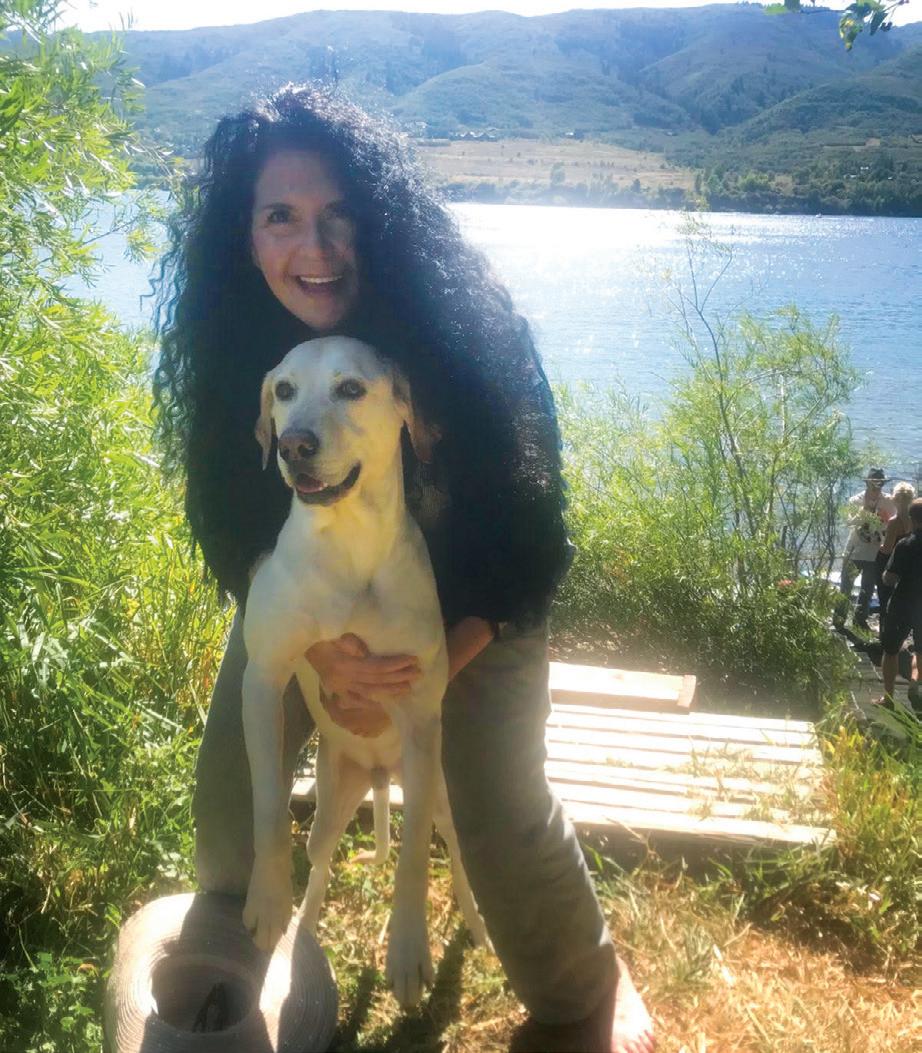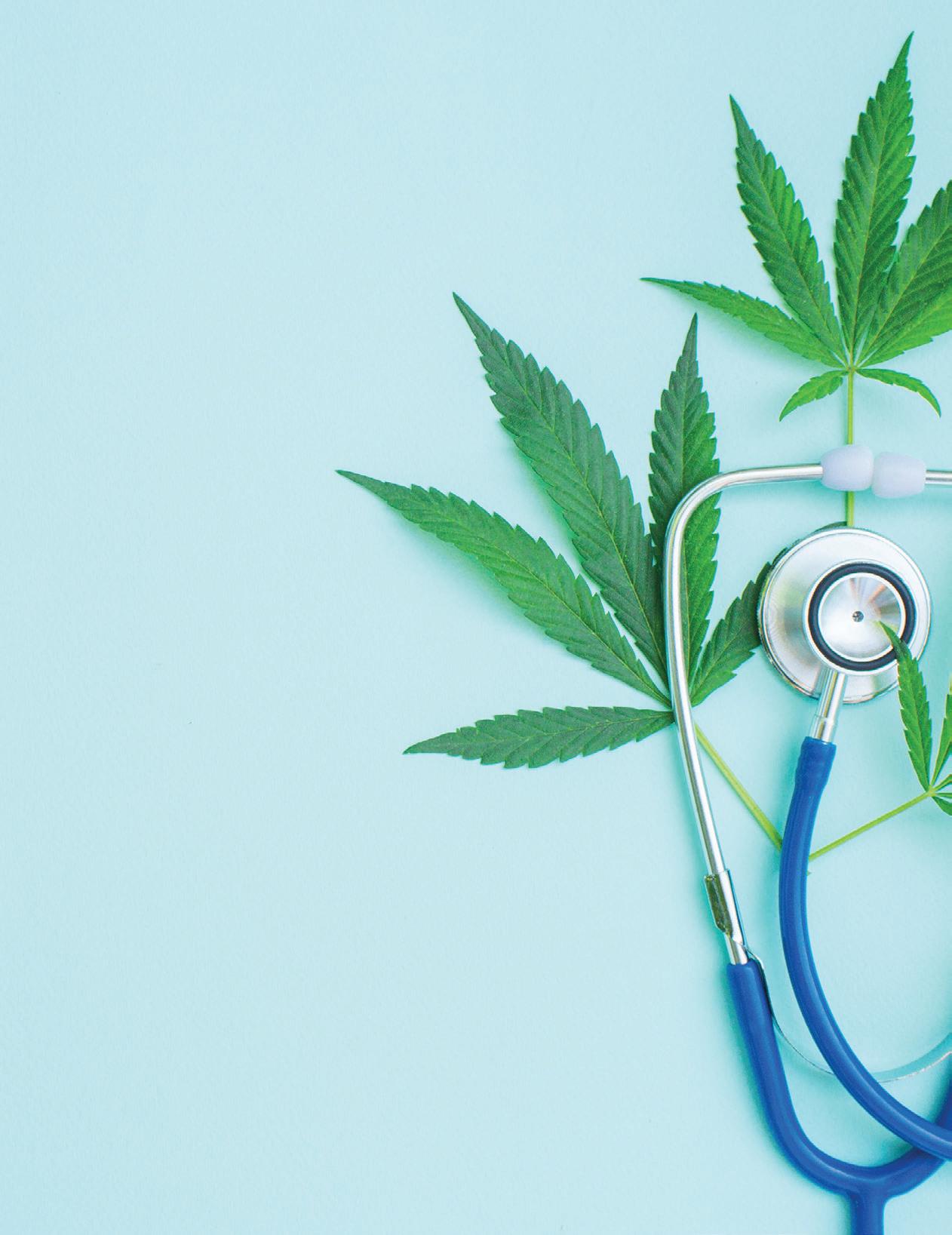
9 minute read
Dr. Sue Sisley
BY HEATHER DEROSE

Advertisement
After 10 years, Dr. Sue Sisley and her stellar team at MAPS finished the first FDA approved research of its kind with a study on the effect of smoked cannabis on veterans with post traumatic stress disorder (PTSD). “We’re grateful that we finally got this across the finish line but disappointed that it took 10 years to complete. That’s a testament to the immense amount of government red tape that’s involved in trying to study cannabis as a medicine. The U.S. government has systematically impeded this type of efficacy research for so many decades. It shouldn’t take that long to do a simple FDA phase two trial with 80 subjects. Patients have legitimate clinical questions about how cannabis works or how it doesn’t work, and they deserve to have these questions potentially answered through rigorous clinical trials. But we have all these government regulatory blockades in the way, including an obvious lack of federal research funding available to study cannabis as a medicine. It’s different if you want to study cannabis as a drug of abuse, you’ll easily obtain federal government money and government (NIDA) cannabis with hardly any obstructions. If you dare say you want to study cannabis as a medicine or do drug development research looking at both safety and efficacy, you could be impeded years.”
Sue continues to speak out about the low quality, over-processed cannabis materi- al she had to use in her study on veterans with PTSD. And this NIDA study drug can- not be sold as prescription medicine later, so it’s fundamentally inadequate for FDA phase 3 trials. This means the US has no federally legal supply of cannabis flower for phase 3 trials where a study drug can actually be approved to be sold on the national market later with FDA indication. When asked about the results, she re- plied, “The outcomes are probably what you might predict from patients smoking moldy, diluted green powder full of extra- neous plant material—not just the buds.” The results have not yet been published. She says, “Scientists have been frus- trated having to endure this government enforced monopoly with University of Mississippi since 1968. Scientists have been requesting to see the DEA license other private growers for research. The study drug we’re forced to use does not represent real-world flower, and we’re concerned that it may be sabotaging the results of efficacy data.” Scientists who want to study the plant still have only one place at University of Mis- sissippi where they can purchase study drug for all US clinical trials. Because of these obstacles she’s faced while study- ing cannabis as medicine, Sue is suing the DEA/Attorney General. “Now we’ve been waiting 3 years since the announce- ment that DEA made back in 2016 on our Federal Register that they would license other growers for research. They’ve not made good on that pledge. We’re desper- ate to find new sources of study drug so that we don’t just continually have to use the suboptimal material from the National Institute on Drug Abuse which subcon- tracts with the University of Mississippi. We’re hopeful the DEA will finally process all of these applications that have been sitting on their desk and finally start giving the approvals needed for these groups to start growing cannabis.” She is eager to start seeing diverse cannabis flower op- tions with different phenotypes that rep- resent products in the regulated markets so she can replicate what patients are us- ing every day.


Sue says one of the hardest parts of doing clinical trials is the recruitment and retention of the patients, and she credits the Battlefield Foundation for their efforts with the study participants. Sue and her MAPS team screened several thousand veterans for the study because of referrals/dynamic PR tactics from the Battlefield Foundation. She says they helped communicate with the veterans, because the VA was blocking the team’s communication with them. She says Battlefield Foundation often drove them to their weekly follow up appointments to ensure they kept coming back to the lab for the entire three month enrollment. She said because of the foundation’s efforts augmenting MAPS’ hard work, they were able to complete the study. The 501(c)(3) has a board of veterans and community leaders, and she hopes others will help support their charity. She says, “We may never have completed the study if it weren’t for the Battlefield Foundation; these dedicated veteran volunteers recruiting/driving the veterans, and overcoming the complete refusal of the VA hospitals to cooperate with this federally legal research.” For veterans interested in learning more about cannabis and other plant-based medicines, she suggests connecting with a veteran charity or peer mentoring with other vets who are knowledgeable about medically active plants. Sue says there’s a number of veteran service organizations that are now doing this sort of outreach or peer mentoring with other vets to teach them about options for plant-based medicines over conventional pharmaceuticals. “The idea is that it’s not just about cannabis, but there’s all kinds of medically-active plants where veterans are finding some relief from their various ailments. I would say they’re more likely to get the guidance they’re seeking from a fellow veteran, than trying to have a discussion with their VA doctor.” She thinks that kind of the peer-coaching model bas been the most useful for many vets who are distrustful of “the system.” She’s seen vibrant online communities where patients who are in remote parts of the world can connect. She hasn’t yet done studies on other plant medicines, but“knows veterans are reporting some beneficial experiences with things like microdosing of psilocybin, experimenting with ayahuasca and ibogaine.” She’s really curious about these options but doesn’t know enough about them yet to speak to their efficacy. “I’veinteracted witha lotof vets who have gone on their own personal odyssey with these different medically active plants and have come out better, more high functioning, and more joyful.” MAPS’ study focused only on smoked cannabis. She states this oneintervention, smoked flower, targetsso many different receptors throughout the body. It’s able totreat multiple levels of illness with just this one intervention. She says that’s what excites her the most. “Typically in modern medicine, we end up giving people a different prescription for each target symptom. For instance, with PTSD, there may beeight different target symptoms, from insomnia to flashbacks, nightmares,hypervigilance, depression. Generally, they all get a different prescription.”
“The idea that I can enable patients to have access to a plant that could treat the whole constellation of symptoms, including pain and other physical problems that they’re having to deal with, that’s what I think is most promising about the plant, that it could substitute for a lot of conventional pharmaceuticals that may be very addictive or have a lot of side effects. If we can eliminate some of those more toxic pharmaceuticals and enable people to simply utilize the naturalflower; it just seems like common sense tells you, that’s a much better idea. But, we have a lot to overcome.” Veterans claim they’re using this plant successfully already, and they don’t need

research. She agrees with them; if they’ve already discovered therapeutic benefits, then they’reliving examples. She says theissue is, it’s difficult to change public policy without more randomized controlled trials that really speak to both the efficacy and safety, and that’s what the government has blocked for so many years. “I see that veterans seem to be getting symptom control for a variety of different medical conditions that they’re struggling with — in many cases they are able to substitute for alcohol, tobacco, illicit drugs, and pharmaceuticals. So, I think that’s valuable. Anytime you can use a natural plant over a chemical Rx (or transition off addictive alcohol/street drugs etc.)... I think it’s optimal!”

Diagnosed with breast cancer at age 47, Sue went through conventional treatment, such as surgery and radiation, but rejected chemo, Tamoxifen, and other standard options. Shortly after her diagnosis was her first time trying cannabis, and she started using cannabis oil to help prevent cancer recurrence. She has been using high-THC oil at night, putting an amount the size of a grain of rice on a vitamin orally at night before sleep. Initially, she had no tolerance, so she had some side effects, but after she built a tolerance over time, she doesn’t feel so obtunded. “I tried smoked cannabis flower a year ago, and I only needed a few inhalations, and I got some calm happy feelings. It was really enjoyable, and I finally understood why people seek that out. I get it now; it’s really pleasant, and there’s no hangover with inhalation and seems ideal. I really wanted to experience that, especially since our research is focused on smoked flower. I wanted toat least know what patients were going through.” When asked if she had any concerns about smoked cannabis flower, she said, “We have almost 30 years of federal government sponsored safety studies seeking to uncover the harmful effects of smoked cannabis flower. Certainly, as physicians, we all believe that all smoking is potentially detrimental to your health. I was certain that the studies would’ve shown a lot of problems arising from that. Then, when you look at the studies, especially the NIDA-funded pulmonary trials that were done by Dr. Tashkin, and see that they, despite billions of dollars in
vested to uncover the harms, they didn’t see any long-term lung problems and no evidence of lung malignancy or emphysema or anything. In many cases, the pulmonary function testing was slightly improved after smoking. So, I think that was a big surprise to all of us in the medical community.” She says sadly most people in medical community still equate cannabis smoking to tobacco smoking and think it’s all dangerous. “I don’t believe that— two different agents with different properties.”
Since taking a stand against the DEA, Sue says,“We are eager to see cannabis flower on the market with an FDA indication for treating PTSD. We’re pursuing other indications forvaped/smoked flower (bud) for treating pain. That’s the next study that we have coming up. It’s looking at advanced cancer patients using smoked flower to treat their breakthrough pain in late-stage cancer. We’re just waiting on FDA approval, and then we’ll be able to get started. Sadly, because of the quality of the NIDA cannabis, I’m forced
to source cannabis flower from other countries because I am reluctant to buy cannabisfrom the University of Mississippi after our last experience, and also because it couldn’t be sold as prescription medicine after we’ve completed phase 3 trials.We’re in the middle of negotiating to importcannabis flower, which would also help us break the NIDA monopoly from a different angle, besides the federal lawsuit. It’s just sad to me that we’re forcing ourUS scientists to source cannabis from foreign producers when we have some of the best cannabis flower in the world. It makes no sense.” With Sue and others speaking out and stepping up demanding high quality, uncontaminated cannabis to use for clinical trials, the monopoly may soon be dismantled. This will provide researchers with material more similar to what patients obtain outside a government study. This would enable study participants to consume cannabis that’s just flowering tops of the plant and not diluted with extraneous plant material, free from excessive mold/mycotoxin, and could provide different results on effectiveness in veterans using cannabis to treat their symptoms. On average, VA data reports 20 veterans take their lives every day, and that’s just in the states that are counting. Access to natural plant medicine can save lives, which is why we need to expand access to high quality material for researchers to study.











